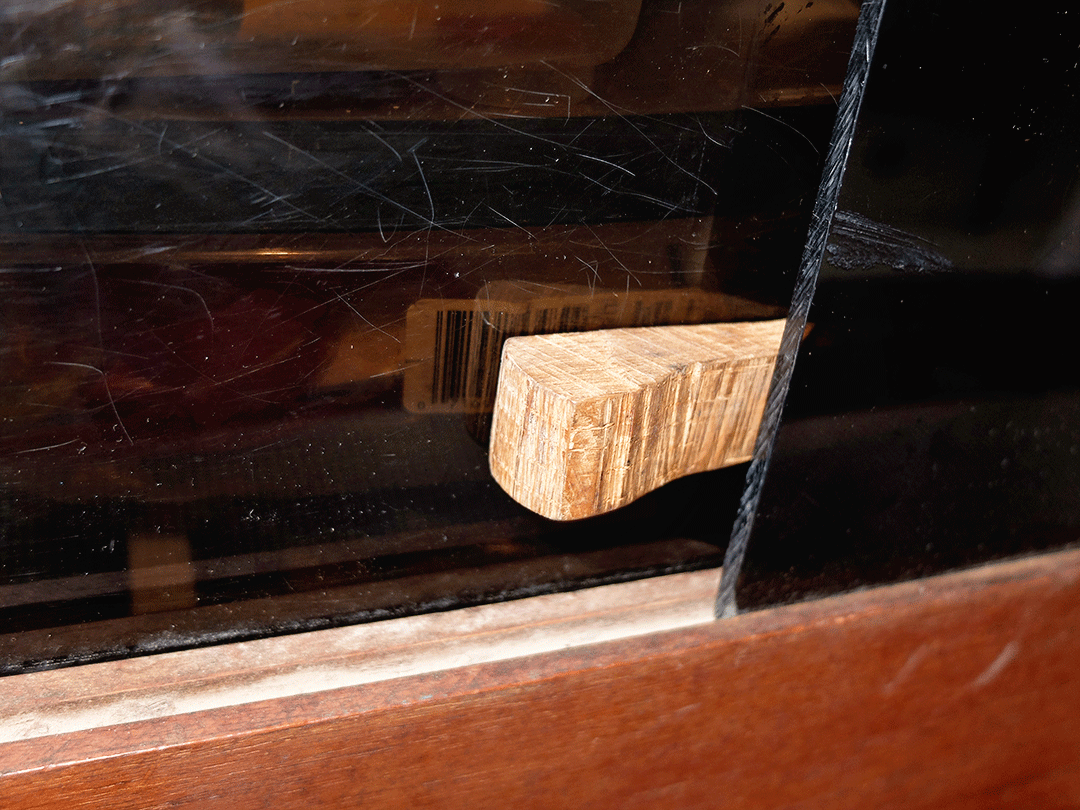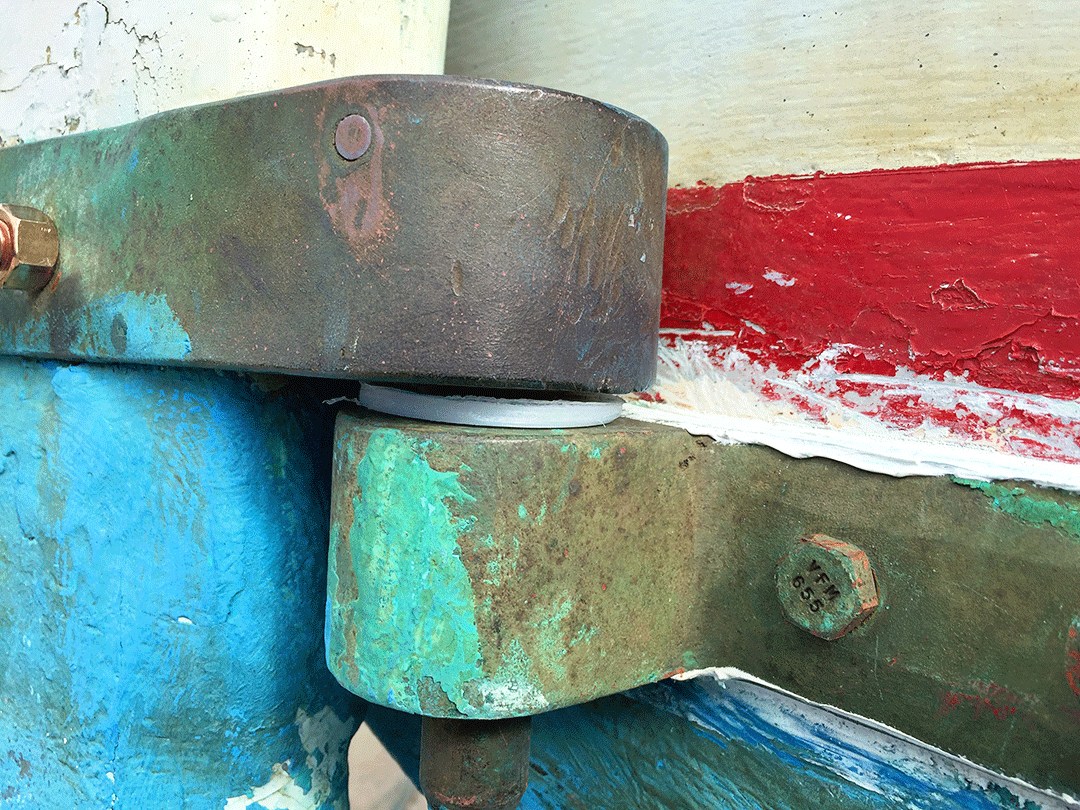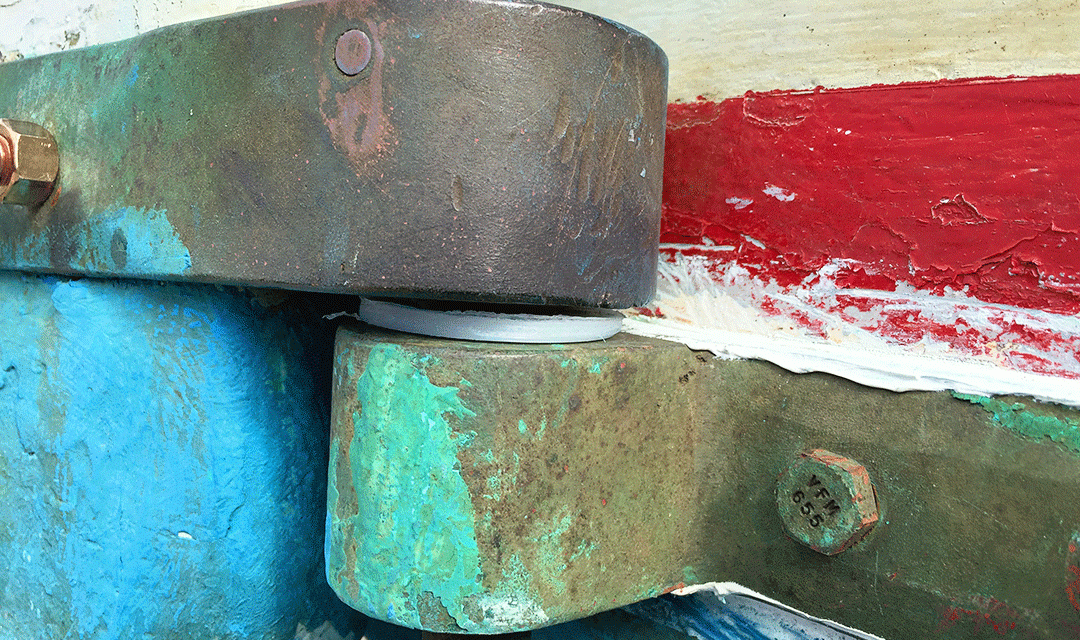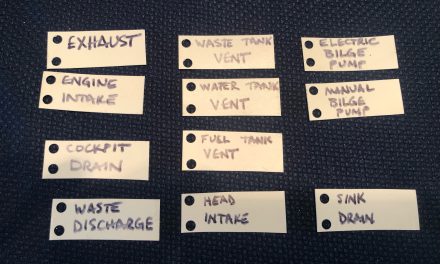
Every sailor knows to investigate when they hear noises out of the ordinary, whether mechanical (the bilge pump running a bit too long) or natural (distant thunder to windward). It’s expected, a part of good seamanship. But none of us is ever prepared for the maddening little sounds, the irregularities that don’t immediately harken danger, but annoyance. I’m talking about the thump, buzz, squeak, rattle, or drip sounds that can be elusive and capricious.
The worst maritime horror story I ever heard involved a teenager who deliberately, and with malice aforethought, placed a marble in the overhead liner of his father’s boat before Dad set off on a short solo trip. The first night at anchor, the marble rolled back and forth. Rrrrrrr…click! Rrrrrr…click! All night, until the old man couldn’t take it any longer and ended up tearing out the headliner. He found the marble and he knew who did it.
I don’t have a teenager putting marbles in the headliner of my Paceship 26Y, but there has been no shortage of annoying noises I’ve had to silence over the years. The folding doors at the vee berth and head thumped, just a little, whenever the boat rolled. The solution was to rip them out and replace them with cloth screens. What an improvement! The pots and pans rattled when they chose to. That was easily fixed by jamming a dishcloth into them and separating the nesting pots with pieces of cardboard. Six sets of sliding panels in the cabin, just above the berths, made noise every time the boat rolled. I made wedges from leftover project wood that I use to silence each set.

The sounds that drove me craziest over the years came from the mast. The internal halyards rattled when the sails were down. I learned to hook the jib halyard to the bow pulpit and tighten it with a winch. I always attach the shackle for main halyard halfway down the boom, and tighten up the other end with a winch as well. I have a simple plastic cleat on the forward side of the starboard spreader to catch the spinnaker halyard and keep it away from the mast. That works well, but if the wind is just right, it will shake, which will send me topside to adjust it until it stops. Sometimes tightening it helps, sometimes loosening. It’s a mystery of the sea.
One of the strangest sounds I endured was a kind of sympathetic vibration, a buzz or hum inside the boat, very loud, which grew and waned. I finally realized it happened when the shrouds were too tight. That used to drive me bonkers.
Related to that is what I call fluting, when a strong wind blowing sideways across the mainsail track starts the entire mast whistling. It can get really loud and almost always happens if the wind is over 30 knots and the boat is at anchor. As the boat yaws, the mast track gets crosswise to the wind and the whistling begins, adding to the generally manic affect of heavy winds. At 60 knots, it shrieks.
And for a number of years – way too long – there was a particular metallic squeak and thump at the mast if the boat rolled at anchor or on the mooring. I could never figure out what caused it, no matter how many times I looked for the source. One summer as I was getting ready to splash, the boatyard pointed out a broken fitting, where the spreader met the mast. There, a single rivet was loose but not quite fallen out. Some quick work with a rivet gun fixed that one. That could have been the end of me.
And then, after years of boat ownership and diligent noise investigation and remedying, all can seem well in the world, a boat at peace, quiet. But it’s a false peace, an intermission. Because boats are noise makers, they just need time. My false peace ended with my rudder.
Every boat I’ve owned has had a noisy rudder at anchor. Any passing wave will shove it to one side or the other and sometimes there is a bit of grumble. Low frequency sounds of that sort resonate through a boat the way a soundbox on a guitar or violin makes the strings sound louder. No matter how quiet the night, there it is, grumble, grumble. It could be fairly pronounced in a busy anchorage. One fix had been to jam the tiller as tight as I could with a tiller line running to each quarter. Sometimes that works, but if the play in the pintles and gudgeons is too much, noise is unavoidable.

My solution was simple and two-fold: I made a set of 1/8-inch washers out of high density polyethylene (HDPE), a heavy plastic available from plastics distributors everywhere. I found a piece of it at a rummage sale masquerading as a thin cutting board. I carefully drilled a hole in each washer the diameter of the pintles, and used them as insulating spacers. HDPE doesn’t last forever, but it does resist wear extremely well and should last a few years, and it’s cheap. Since I haul out annually, it’s easy to keep an eye on it and replace it as necessary.
I’ve restored the boat to quiet now, enjoying the intermission, and keeping an eye open for teenagers with marbles. So far, so good.






